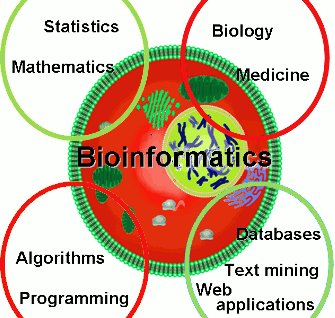 Bioinformatics is the use of computer science and information technology to biology. Paulien Hogeweg created the name “bioinformatics” in 1979 for the study of informatic stages biotic systems. Bioinformatics now require the creation and progress of databases, algorithms, computational/statistical techniques, and theory to solve properly and useful problems coming from the management and analysis of biological data. 
Bioinformatics has three sub-disciplines:
Bioinformatics is important because it has a more global view in experimental design. It also has the ability to take advantage on the emerging technology of database mining, the process to gather, collect, and analyze patterns from information. The goal of bioinformatics is to increase our understanding of biological processes. |

The Human Genome organization (HUGO) was founded in 1988. In 1991, a total of 1,879 human genes were mapped. In 1993, a human genome research center in France called Genethon produced a physical map of the human genome. In three years, Genethon published the final version of the Human Genetic Map. This wrapped up the first phase of the Human Genome Project. Bioinformatics was supplied by the need to create huge databases, such as GenBank, EMBL, and DNA Data Bank of Japan to store and compare the DNA sequence data erupting from the human genome and other genome sequencing projects. Today, bioinformatics holds protein structure analysis, gene and protein functional information, data from patients, pre-clinical/clinical trials, and the metabolic pathways of many species.
In the past few decades, developments in genomic and other molecular research technologies and developments in information technologies quickly produced a huge amount of information related to molecular biology. Bioinformatics provides usable databases that allow scientists to submit, search, and examine information everywhere. It offers analysis software for data studies and comparisons. This provides tools for modeling, visualizing, exploring and interpreting data. Scientists developed many bioinformatics technologies because of the need to understand DNA, the nucleic acid that carries the genetic code, and other components of living organisms. Bioinformatics creates a new knowledge to enhance our standard of life. The tasks used in bioinformatics concern the creation and support of databases of biological information. Nucleic acid sequences, and the protein sequences gathered from them, make up the majority of databases Bioinformatics helps us think of structures, such as proteins, and learn more about their work and function.  |